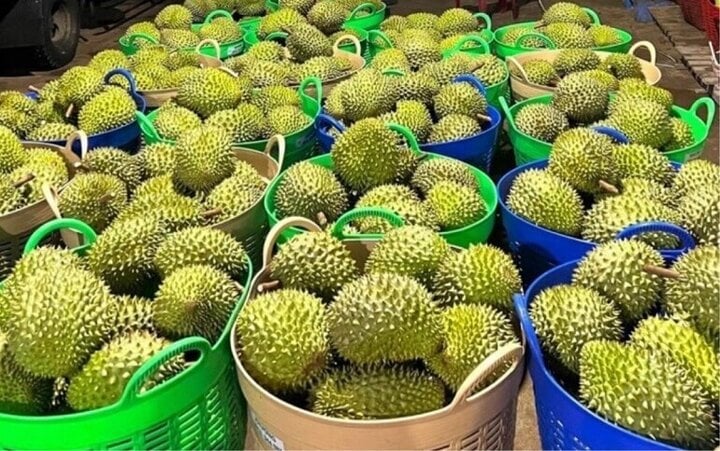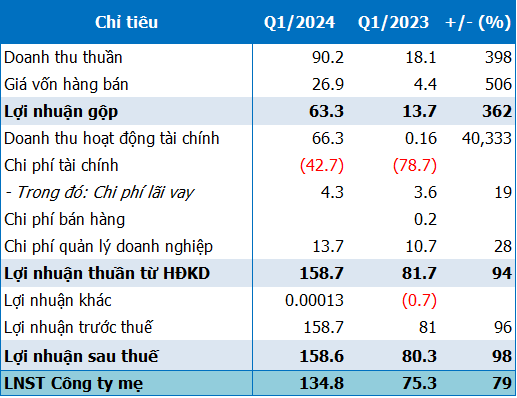Durian Prices Plummet in Vietnam as Supply Increases
Specifically, Monthong durian grade A is being purchased by traders at 113,000 – 115,000 VND/kg; grade B at 93,000 – 95,000 VND.
Similarly, Ri 6 durian has also decreased to 81,000 – 86,000 VND/kg for grade A and 66,000 – 68,000 VND/kg for grade B.
These prices are all more than 50% lower than before April 10th.
In an interview with VTC News, Mr. Đặng Phúc Nguyên, Secretary General of the Vietnam Fruit and Vegetable Association, said that from January to March, the Mekong Delta’s off-season durian had no competition, leading to high prices.
However, other countries such as Thailand and Malaysia have now entered their main harvest season. Thailand’s durian production is twice that of Vietnam, so it is normal for Vietnamese durian prices to drop.
“However, even with the price drop, growers are still making a profit, just not the huge profits they were before,” said Mr. Nguyen.

Durian prices have fallen sharply compared to the first three months of the year. (Illustrative photo)
According to Mr. Nguyen, the price of Grade 1 Thai durian is currently around 110,000 VND/kg, a 50% decrease from the off-season peak. While not at its highest, it is still a desirable price, the highest among fruits at the moment, and comparable to the same time last year.
“Durian growers always want high profits, but in today’s competitive market, nothing stays high forever. There will be times when prices go down. Malaysia will soon start exporting fresh durian to China, which will bring more competition. Vietnam is only exporting fresh durian at the moment, while frozen durian is expected to be approved this year, but it is not known when.
In addition, Vietnam’s durian export market is mainly China. In 2023, Vietnam exported 2.3 billion USD worth of durian, with China accounting for 2.1 billion USD,” said Mr. Nguyen.
He also emphasized that recently, traders have been “forcing” farmers to cut young durians to sell to China when prices were high and supply was low. The consequence of this is that Vietnamese products are no longer favored by some Chinese consumers, leading to a decrease in purchases and a fall in prices.
Moreover, another reason is that the output of Vietnam’s main durian crop this year (from April to September 2024) is forecasted to increase by about 20% compared to 2023, also leading to lower prices.
Meanwhile, Mr. Nguyen Như Cường, director of the Department of Crop Production (Ministry of Agriculture and Rural Development), explained: “The price of durian exported to the Chinese market in the early months of 2024 was very high. Some farmers have converted crops such as rice and jackfruit to durian, and some areas have been converted without following the local planning regulations. This is the reason for the decrease in durian prices when supply increases.”
Mr. Cường also commented that the quality of exported durian is not tightly controlled. Some traders and export companies are not acting in good faith. For example, recently, when market demand was high and prices were high, some businesses and purchasing warehouses signed large contracts with Chinese partners.
However, due to insufficient supply, traders “forced” farmers (who had signed purchase contracts) to cut young durians, resulting in quality that did not meet consumer standards.
Giving an example of Thailand’s professional durian harvesting, Mr. Cường said that in Thailand, the harvesting and durian cutting teams are highly specialized.
“Young durians, when detected, will be sprayed with red paint to prevent them from being sold to others. Thailand also organizes mandatory workshops and training sessions for orchard owners, harvesters, and cutters to learn and stay up-to-date on durian quality.
More importantly, Thailand has a specialized force responsible for training, inspecting, and punishing any packing facility found buying and selling young durians,” said Mr. Cường.
The ongoing drought in the Mekong Delta is also believed to be affecting the quality and production of durian, leading traders to pressure farmers to sell at lower prices.
According to the Ministry of Agriculture and Rural Development, the area planted with durian nationwide in 2023 is estimated at 110,000 ha, an increase of over 24% per year, the highest growth rate among the major crops today. The area under harvest is 54,400 ha, with a yield of 16.5 tons/ha and a production of 849,100 tons, concentrated in four regions.
The Central Highlands has the largest durian area, with 51,400 ha and a production of 336,400 tons.











































